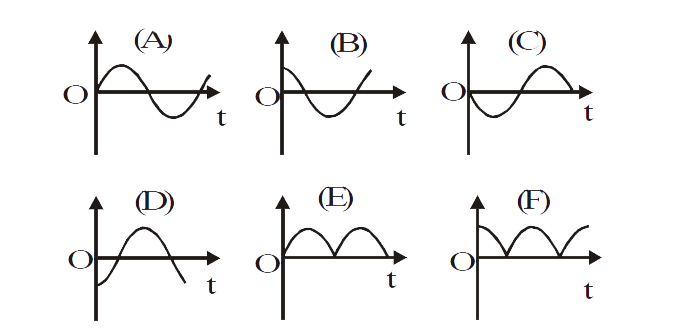When a particle undergoes S.H.M., there is always a constant ratio between its displacement and
period
acceleration
mass
velocity
The correct Answer is:C
Topper's Solved these Questions
- OSCILLATIONS BOOK - TARGET PUBLICATIONCHAPTER - OSCILLATIONS EXERCISE - Critical thinking
81 Videos
- OSCILLATIONS BOOK - TARGET PUBLICATIONCHAPTER - OSCILLATIONS EXERCISE - COMPETITIVE THINKING
135 Videos
- MODEL QUESTION PAPER BOOK - TARGET PUBLICATIONCHAPTER - MODEL QUESTION PAPER EXERCISE - MODEL QUESTION PAPER -II
47 Videos
- QUESTION PAPER 2019BOOK - TARGET PUBLICATIONCHAPTER - QUESTION PAPER 2019EXERCISE - MCQ
45 Videos
Similar Questions
Knowledge Check
In SHM there is always a constant ratio between displacement of the body and its
AvelocityBaccelerationCmass of the particleDall of the aboveWhen a mass undergoes simple harmonic motion, there is always a constant ratio between its displacement and
AperiodBmassCaccelerationDvelocityThe total energy of a particle in linear S.H.M. is 20 J. What is its kinetic energy when its displacment is half of the amplitude ?
A10 JB5 JC15 JD25 J
For a particle undergoing SHM, when will be its
(a)velocity and displacement in the same direction
(b) velocity and acceleration in the same direction
(c ) displacement and acceleration in the same direction
View SolutionThe potential energy of a particle executing S.H.M. is 2.5 J, when its displacement is half of amplitude. The total energy of the particle will be
View SolutionThe potential energy of a particle execuring S.H.M. is 5 J, when its displacement is half of amplitude. The total energy of the particle be
View SolutionThe restoring force and P.E. of a particle executing a S.H.M. are F and U respectively when its displacement is x. The relation between F, U ad x is
View SolutionThe potential energy of a particle execuring S.H.M. is 2.5 J, when its displacement is half of amplitude. The total energy of the particle be
View Solution

